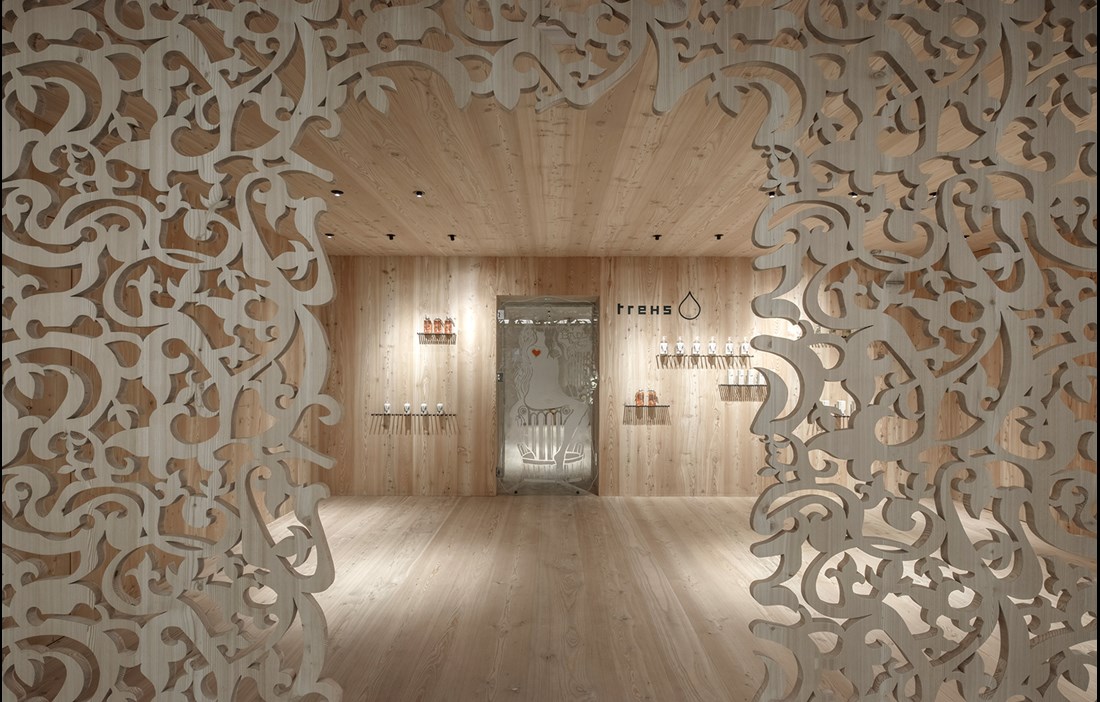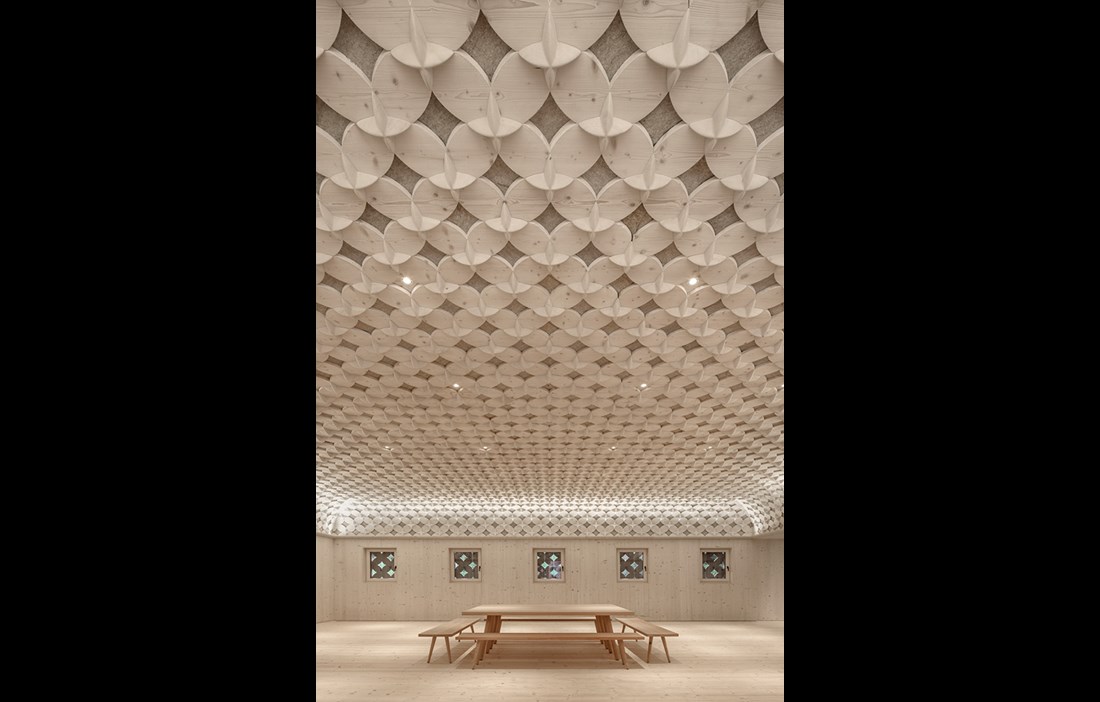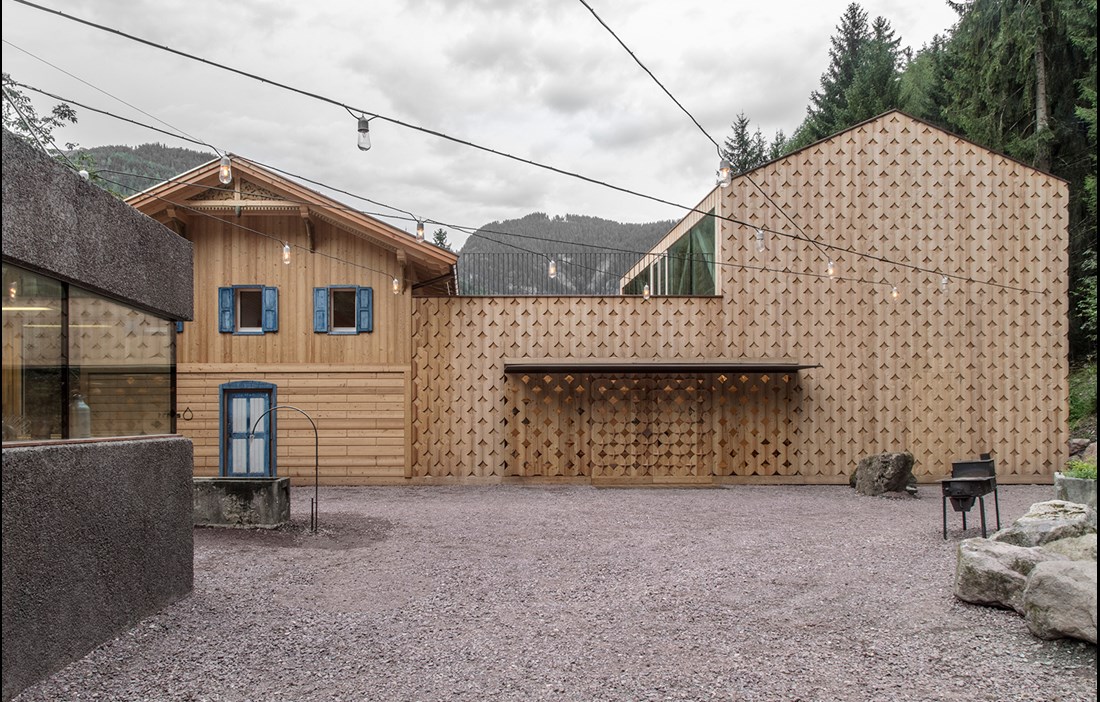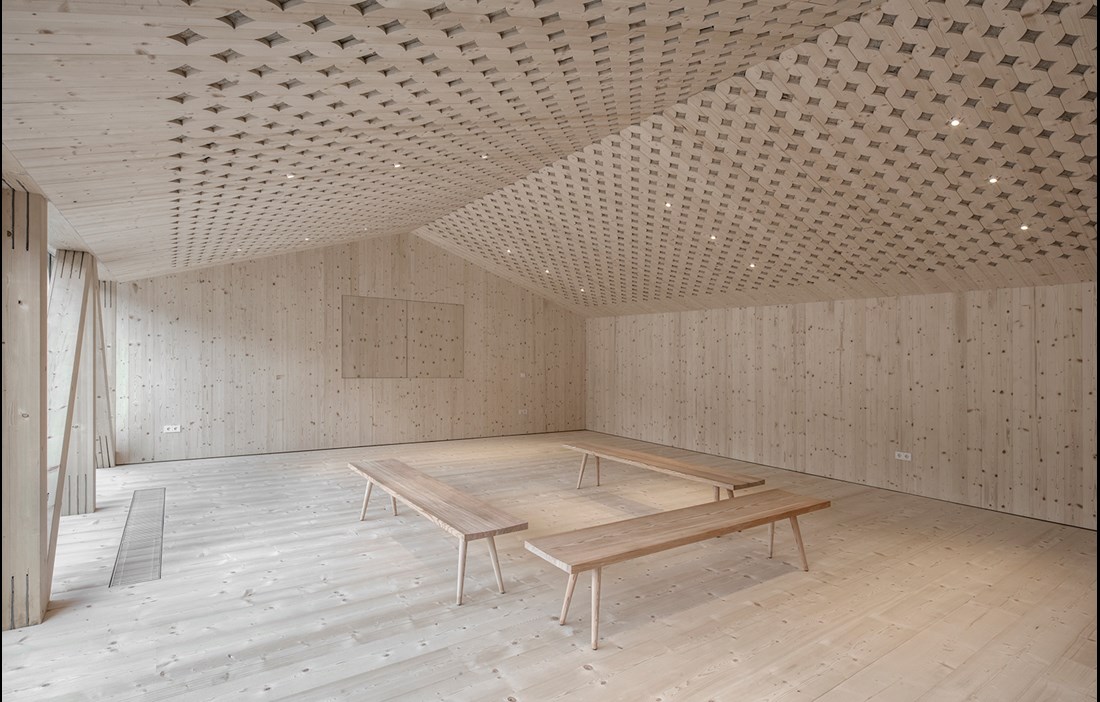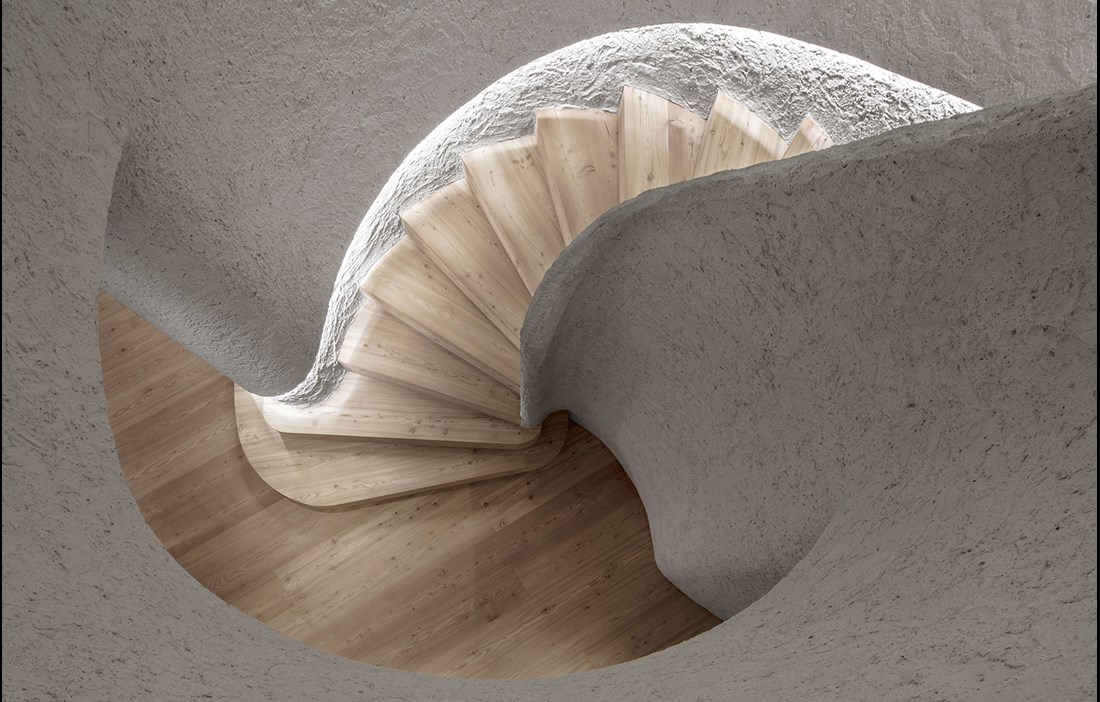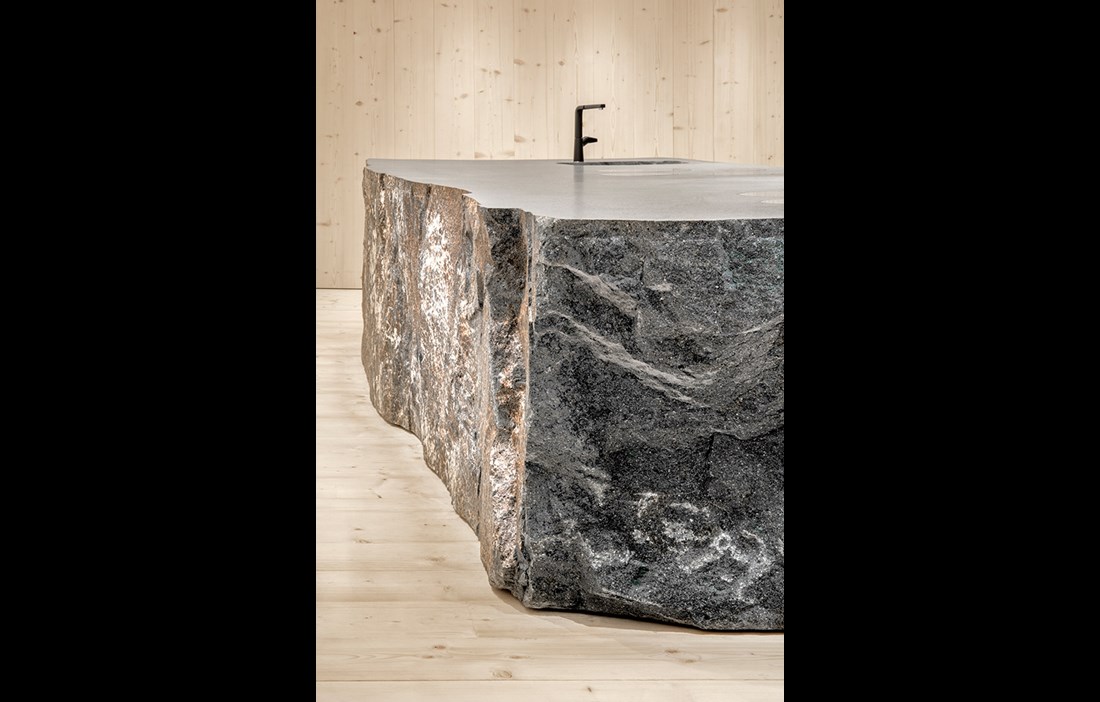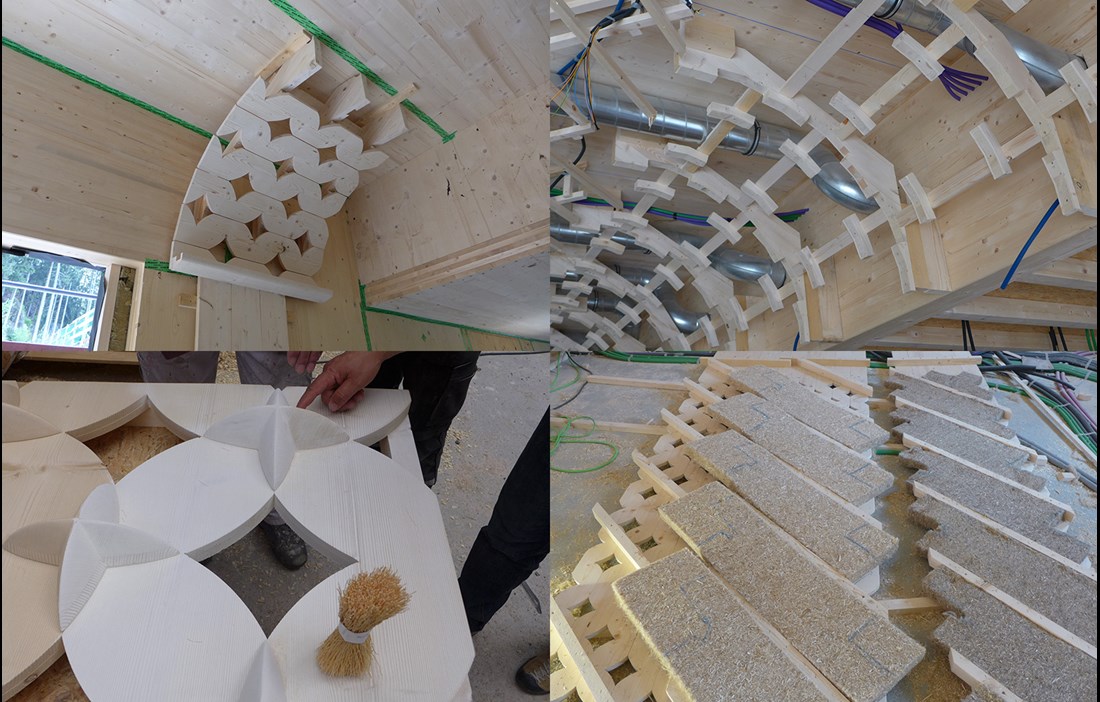In the idyllic spa town of Sarntal, located in the South Tyrol in northern Italy, Hotel Bad Schörgau’s old, timber-inspired buildings rise up around wooden bathtubs. The place has a longstanding reputation as a spa and holiday retreat. There is evidence that as far back as 1689 people came here to enjoy the health-giving waters, both in wooden bathtubs and in the local springs. The current hotel has stood here since the 1800s, undergoing sympathetic modernisation over the years, including a recent refit of the spa facilities. Today it is a showcase of local materials – doors, floors and furniture are a vision in larch, with added use of the mineral porphyry on the floor. The entrance to the spa leads through an opening flanked by eye-catching wooden ornamentation. The precision cut pattern is a new creation that harks back to the old traditions of the local area. Now it has been given a greater, more prominent role at the resort.
As more and more guests have discovered the hotel, the business has had to expand accordingly, and two years ago the hotel added an extra building to house both a cooking academy and a showroom for locally produced beauty products. To retain the site’s authentic feel, a cohesive approach was required for the two new entities, which also had to have a natural connection with the existing hotel.
“The goal was a design that is never boring, but one that also isn’t so intense that it interrupts the hotel guests in their pursuit of peace and calm,” explains Alexander Pedevilla, chief architect on this project by Pedevilla Architects.
The result was profuse yet discreet ornamentation, inspired by what the architects had already done in the spa area, whose repetitive pattern blends into the building while still piquing people’s curiosity. It’s a design that on the one hand creates an almost meditative experience for anyone who gazes at it for long enough, and on the other hand brings life to the traditionally shaped buildings.
“Because the hotel is situated in the Sarentino Valley, which is renowned for its tradition of health and wellbeing, it was extremely important for us to include that feeling in the project. The ornamentation that we chose is typical of the region and gives a rural feel. You often see it on doors, walls and cupboards. We went for a modern interpretation of the pattern and gave it a three-dimensional form,” relates Alexander Pedevilla.
The decorative pattern recurs throughout the building, where it generously spreads over the façade and the internal walls and ceilings. Created in larch wood, the pattern repeats in 24 centimetre sequences, with a depth of 3 centimetres helping to give it its three-dimensional structure. The pattern is based on circular elements, where the cut-out in their joint creates a star-shaped pattern. The ceiling alone has over 1,500 stars, fitted by hand on top of a batten system and then limewashed, once again by hand. The architects also applied the same principle to the exterior but without the star shape, to give a gentler look.
“The pattern required meticulous planning and execution, as its symmetry leaves no room for any discrepancies. The great challenge was assembling the parts, particularly in the places where we had to take account of fittings behind, such as ventilation ducts and acoustic installations. But tradition is important, and we’ve tried to do it justice by doing as much as possible by hand,” says Alexander Pedevilla.
The beautiful, soft pattern harmonises with the peaceful surroundings. At the same time, it also brings the exterior and the interior to life. In the cooking academy, the ornamentation, combined with the pale floor and the spruce walls, leads the eye towards the centre of the kitchen. In the middle stands a 5 metre long kitchen island that combines a hob and worktop, plus a monolithic block of local grey-green Sarentino porphyry, the top of which has been polished to a glossy finish while the sides have been left untreated. The unpolished sides of the 22 ton stone provide a sharp but elegant contrast with the light, soft décor of the room. And like the generous use of wood, this material choice is a way to connect the room more closely to nature, while also visually linking up with the spa.
“We’ve worked hard to use local materials as far as possible. The stone comes from a nearby quarry, and we’ve used the same kind of stone as aggregate in the exposed visible concrete surfaces, for example,” says Alexander Pedevilla.
The load-bearing components are CLT, supplemented by a wooden lattice on the upper floor of the cooking academy. The structural frame has been insulated and concealed behind wood panelling. Externally, the whole building is clad in untreated larch. The interior features whitewashed spruce, a wood that is typical for the region.
“We’ve used wood from nearby forests and taken great care to ensure that the material is produced correctly,” says Alexander Pedevilla.
The generous use of wood translates into a pleasant indoor climate which contributes to the wellbeing of visitors in more ways than just the visuals. As an extra detail, hemp has been chosen as a partially decorative but mainly insulating material.
“The wooden ceiling meets all the technical requirements for this kind of building. It provides good acoustics and the layer of hemp distributes the air evenly across the whole ceiling, providing good, natural ventilation,” says Alexander.
Earlier this year, Pedevilla Architects received the “Holzbaupreis Südtirol” for its work at Bad Schörgau, an award that Alexander Pedevilla feels honoured to receive because it is not just about the design but also the choice of wood and the quality of the craftsmanship.
“All the visitors seem to be incredibly enthusiastic about the way we’ve chosen to use and show off the wood. It remains to be seen what impact the award will have on future projects.”
It is at least clear that the ornamentation has brought new life to a place that has done what it can for people’s wellbeing for so many centuries.
Text Johanna Lundeberg


